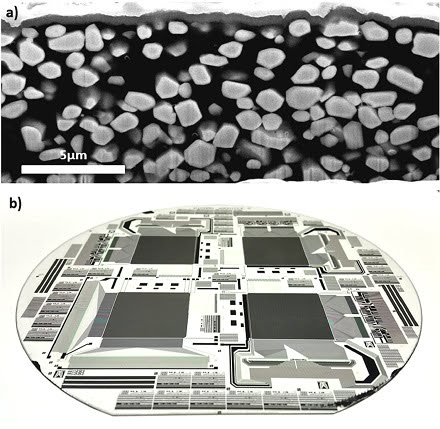A novel photonics technology is being developed to produce a set of low radiation, low cost, flat panel x-ray detectors, promising safer diagnosis for patients and less exposure for hospital and dental staff. The DiCoMo — Direct Conversion hybrid-organic x-ray detectors on Metal oxide backplane — project also promises this new technology will produce some of the highest resolution images ever seen in single x-ray records or CT scans.
High resolution images are seen with direct converters used in mammography, as they use semiconductors that directly convert the x-rays into electrical signals. Indirect converters, on the other hand, use scintillators emitting light upon x-ray irradiation and then converting it into electrical signals by a photodetector. They produce lower radiation doses, but low image quality, as well, and are used in radiography and fluoroscopy.
The combination of direct and indirect converters does not exist today, as image quality is often substituted for more or less radiation and vice versa. The DiCoMo project is working on combining the two by getting the indirect converter with low radiation output to behave like a direct converter.
Project coordinator Dr. Sandro Tedde of Siemens Healthineers told Photonics Media they call the process “quasi-direct conversion.”
“X-ray photons are converted first into visible photons and then into electrical charges by an organic photodetector,” Tedde said. “It is a rather complex system in terms of device physics, but it is a rather disruptive approach which is enabled by the versatility of organic semiconductors.”

Scintillating micro-particles (white) embedded in an organic semiconducting bulk (dark) (a); Active pixel metal-oxide backplane (b). Courtesy of Dr. Sandro Tedde.
The DiCoMo technique embeds the scintillator into the photodetector itself and the absorption of light takes place right where it was generated, creating high spatial resolution typically only seen in direct converters. The purported outcome is image quality that rivals a 16 MP photograph. Combine that with lower radiation levels and a lower price tag, and the DiCoMo detector could potentially replace current technology.
“DiCoMo aims to improve the specificity, in our case the resolution, and sensitivity of digital flat panel x-ray detectors, making this device versatile,” Tedde said. “It could be used in medical, veterinary and dental surgeries, as well as be really attractive to customs or the military for scanning relevant material.”
The DiCoMo project began in early 2015 via the European Commission’s Horizon 2020 program and runs until the end of 2017. Tedde said his group is working to achieve their goals and hope to have these revolutionary new x-ray detectors ready within five years.
Siemens Healthineers in Germany has teamed up with partners BASF Switzerland, Belgian microelectronics center IMEC, Dutch research company TNO, Belgian chip designer ICsense NV, and Italian simulation specialist MorphwiZe.
“DiCoMo has a really strong and committed consortium,” Tedde said. “[We] look forward to benchmarking and proving the feasibility of this new detector with existing technologies.”